 | © 2001-2024 ./) . . ./) . . |
 All you need to know about Monohull SailboatsThe definition of monohull is a sailboat with a single hull. Monohull sailboats are often categorised by the type of rig (mast and sails. Monohull sailboats are also called a sloop, cutter, ketch, yawl, or schooner. Modern sailboats are most commonly the sloop. It has one mast and two sails. Typically, a Bermuda-rigged main and a headsail. This configuration is extremely efficient for sailing into wind. A cutter is similar to an sloop, with one mast and mainsail. However, the mast is generally carried further aft to permit a staysail and jib to be attached to the inner forestay and head stay. The ketches has 2 masts, and a shorter mast at the end of the mainmast and forward of the rudder posts. The shorter mast is called the mizzen mast. You can also Cutter-rig a ketch with two head sails. A yawl is similar to a ketch, with a shorter mizzen mast carried astern the rudderpost more for balancing the helm than propulsion. A schooner’s mainmast is taller than its foremast. This distinguishes it from a ketch. A schooner may have more than one mast, but the foremast is always lower than its foremost main. Topsail schooners of the past had topmasts that allowed triangular topsails sails above their gaff sails. Many modern schooners are Bermuda-rigged. A monohull sailboat is a type of boat that has only one hull, or main body. The monohull design is the most common type of sailboat, and it is also one of the oldest types of boats in existence. The monohull design is simple and efficient, and it is able to provide good stability and speed. Monohull sailboats are typically used for racing, cruising, and other types of sailing. Some monohull sailboats are also used for fishing or other commercial purposes. Monohull sailboats come in a variety of sizes, from small boats that can be sailed by one person to large boats that require a crew of several people. Sailboats have been around for centuries, and their origins can be traced back to the early days of human history. The first sailboats were probably simple rafts or canoes that were propelled by the wind. These early boats were likely used for fishing or transportation, and they gradually became more sophisticated as humans learned to build better vessels. Around 4,000 years ago, the Egyptians began using sailboats to transport goods along the Nile River. The sailboat soon became an essential part of life in ancient Egypt, and it continued to be used for trade and travel throughout the Mediterranean region. Today, sailboats are still used for transportation and leisure, and they continue to evoke a sense of adventure and exploration. Monohull SailboatThe monohull sailboat is a sailboat with a single hull. A monohull sailing boat has the following characteristics – The monohull, is propelled by wind and kept on course by the fins in the water beneath it. – The rudder controls the trajectory. It consists of the “wing” at the rear of hull, which is submerged in water and the helm. – Monohulls can be mono- or twin-rudder. A monohull’s speed will determine how thrilling it is. Monohulls are a great choice for speed enthusiasts. – The monohull can be broken down into two parts: the rig or the hull. This is what makes the sailboat float. Ballast is a mixture of tanks filled with water that stabilizes the monohull. This counterbalances the list. (This is an inclination that’s a little under wind pressure or for some other reason). The monohull’s daggerboards are visible from the hull. They will keep the monohull on its course. A keel is a device that ensures stability and prevents the boat from capsizing. The rigging refers to all parts that help a boat propel itself and manoeuvre. Just a random website for/by Sailors Yachting World Monofoil: The pocket rocket that can foil in just 8 knots of breeze - Matthew Sheahan
- October 1, 2019
Built and developed in secret, the 8m Monofoil is a super-fast one-off foiling monohull, originally designed as a lake racer The spectacle of a flying catamaran, be it an Olympic Nacra 17, a GC32, the recent America’s Cup 50-footers, or anything in between, has become almost normal in today’s racing world, so rapid has the shift to foiling been among multihulls. But, even 17 years after they first appeared, the sight of a diminutive foiling Moth still turns heads. Foilers don’t have to be big to be impressive, balancing a single hull on a single foil is enough. Like those who can ride a unicycle, there’s something awe-inspiring about watching sailors who have pitch perfect balance fly a twitchy monohull while making it look like the most natural thing in the world. There have been plenty of attempts to bring monohull foiling to bigger boats and to the masses. Yet no one has yet cracked the code, at least not for production boats.  Little surprise then, that whenever a new monohull foiler comes onto the scene it attracts plenty of attention. One of the latest is the 8m Swiss-built Monofoil. This extraordinary and complex looking boat is essentially a sportsboat with an open cockpit but with outrigger foils, like bicycle stabilisers, that generate righting moment by pushing upwards on the leeward side. She was designed by Swiss match racing sailor Eric Monnin and built by Damian Weiss, both of whom shared a common goal: to create a fast foiling monohull for the European lakes. Interestingly, neither had any desire to create a production version, nor tell the world that this was the answer for others. Instead, they simply wanted to find out if they could fly fast enough on one hull to stand a chance of winning some of the big prizes at Europe’s top lake races, including the famous Bol D’Or Mirabaud. Article continues below…  Charal: On board the radical IMOCA 60 that takes foiling to the next levelIn St Malo for the start of the Route du Rhum in early November, every inch of the IMOCA 60…  Eagle Class 53: The foiling cruiser inspired by the America’s CupNot everything that flies is destined to scorch around an America’s Cup course. The future for sailing hydrofoils is surely… Launched in the spring of 2018 after two years of secret development, the initial signs looked good as the 8m sportsboat delivered an impressive opening performance, topping 25 knots on one of her first outings. After a winter of tweaking and refining, where the team had increased the foils by 20% and reduced her overall weight by 50kg, the Monofoil was back afloat for this season. Shortly after her re-launch at Easter, it was clear that the team had raised the game. “We can now foil upwind in just 8 knots of breeze,” said Monnin. “And when the breeze builds to 12 knots we are travelling at 16-20 knots at a true wind angle of around 50-60°. When it comes to downwind performance we can happily sit at 22 knots in 12 knots of wind with the gennaker. After that, when the breeze is up to 15-20 we are holding 24-27 knots with just the main and jib,” he continued.  The carbon bowsprit is 1.2m long and cants so the tack of the gennaker can be set further to windward, allowing the Monofoil to sail deeper All impressive stuff for an 8m monohull. This is a proper pocket rocket that weighs just 650kg and can be rigged off the road trailer and launched in a couple of hours. Indeed, Monnin explains, her performance was in part limited by the need to keep the maximum beam down to 2.5m to meet European towing regulations. Single hull foilingSo how does the Monofoil work? Setting the foils to one side to start with, the 8m long sportsboat flies a self-tacking jib upwind and a gennaker off a canting bowsprit downwind. She is designed to be raced by a full crew of four, including the helmsman, with two on trapezes to boost the righting moment. She has a large square-topped mainsail that makes full use of the available space in a sail plan that sees the boom extend all the way to the transom where a full width traveller allows plenty of mainsheet tension to keep the head of the main stand up. This does mean she has a pair of running backstays rather than a single fixed stay, but double aft swept spreaders provide sufficient fore and aft support for the mast.  The foil deployed, but in the raised position. Normally it wouldn’t be underwater but the boat was heeled at the dock Being a potent performer, she sails at high apparent wind speeds with the apparent wind ahead of the beam. This makes the full width mainsheet traveller an important feature to allow the mainsail to be dropped down to leeward while still maintaining leech tension, much like a multihull. Her rudder is mounted on a transom-hung gantry to ensure greater efficiency for the T-foil blade. The rake of the rudder can be adjusted to alter the fore and aft trim of the boat. While the foils look large and complex, their operation is surprisingly simple and belie the amount of work that has gone into designing a complete system that allows the curved foils to slide through a set of bearings in the hull.  A simple rope-driven worm drive alters the rake of the T-foil rudder, which in turn alters the trim of the boat. The rudder is mounted on a gantry off the transom to minimise cavitation Much like the Beneteau Figaro 3, the idea is that both boards are lowered when sailing. Yet unlike the Figaro, the windward board is lifted partially to help raise it above the water’s surface and reduce the chances of it becoming immersed where it would create drag. The clever part is the small amount of movement that is required to lift and lower the boards, especially when compared to the amount of movement required to raise and lower daggerboards on a modern multihull. Also unlike the Figaro, the Monofoil’s boards are fully retracted in light winds. With very little of the foil in the water there is minimal drag and the boat can be sailed like any other monohull.  A custom bearing lets the daggerboard slide vertically to be raised or lowered. Rake is adjusted by the green line winding a worm drive In these conditions the skinny and efficient 2.2m deep keel, with its 160kg bulb, is a good combination when the breeze is below 8 knots and allows the Monofoil to perform like any other similarly sized sportsboat. The dihedral (upwards angle) of the foils is also an interesting feature that provides a degree of automatic heel control. As the boat accelerates and comes upright, so less of the foil is in the water, which reduces vertical lift. Deceptively simpleAt rest this boat does look pretty complex, yet once she’s rigged and underway you realise how simple she is to operate as well as how much effort has gone into designing her that way.  Below decks the full carbon construction is clear to see This is an ingenious trailer-sailer that will fly in light conditions and be stable on foils right up through the wind range, something the crew demonstrated during this year’s Mirabaud Bol d’Or. As a vicious 50-plus knot storm swept through the fleet, she and her crew were one of the few to survive unscathed and go on to complete the overnight race. The irony remains that – unlike many others in the Bol d’Or – this is not a boat that was intended to be the prototype for a new range of production foilers, even though she appears to provide answers to plenty of questions. The bottom line is that the Monofoil seems to work. Irrespective of what speeds she clocks up, what is most impressive is how she performs across such a wide range of wind speeds.  Rectangular cut-outs in the hull allow the foil to be lowered completely on the leeward side. The windward foil is raised slightly in a similar way to pulling up a normal daggerboard The Monofoil is no one-trick pony and while the concept wasn’t created for production, it could provide an appealing route for those who are realistic about their ability to learn how to balance like a Moth sailor, or ride a unicycle. SpecificationLOA: 8.0m (26ft 3in) Beam: 2.5m (8ft 2in) Displacement (empty): 850kg (1,874lb) Mast height: 12.2m (40ft 0in) Mainsail area: 32m 2 (345ft 2 ) Headsail area: 16m 2 (172ft 2 ) Gennaker area: 50m 2 (538ft 2 ) - Used motorboats
- Used sailboats
- All used boats
- New motorboats
- New sailboats
- All new boats
- Boat brands
- Boat models
- Boats ad visibility booster pack
- Boat quotation
- Frequently asked questions
Used Monohull Sailboats for saleConsolation 37 aluminium, allures 39.9, beneteau oceanis 35, bavaria 340, bermudian yawl, felucca kornati 608, dufour 350 grand large, ecume de mer, vagabond 41, beneteau oceanis 40.1, steel custom ketch, beneteau oceanis 350, nicholson 31, kaap falga 900, sun legende 41, beneteau first 375, dufour 35 classic, beneteau first 41s5, why trust us , already 13341 boats sold through us, what is a monohull sailboat, the characteristics of a monohull sailing boat. As the name suggests, the monohull sailboat - as opposed to multihull sailing boats - is a sailboat with a single hull . Sometimes equipped with an auxiliary engine, the monohull is propelled by the force of the wind and keeps its course thanks to the fins located in the water under the hull. The trajectory is controlled by the rudder which consists of the helm and the rudder (a 'wing' located at the rear of the hull and submerged in water). A monohull is either mono-rudder or twin-rudder. The thrills you'll feel on board a monohull depend on the speed it reaches. Speed enthusiasts can find what they're looking for among the monohulls. The monohull can be divided into 2 parts: the rig and the hull. The latter is what allows the sailboat to float. It contains ballast, consisting of tanks filled with water, that stabilses the monohull by counterbalancing the list (this is an inclination of a few degrees under wind pressure or some other cause). The daggerboards come out of the hull: they are what will allow the monohull to stay on course. If the centreboard is ballasted, we will speak of a keel, which ensures the stability of the boat and prevents it from capsizing. As for the rigging, this is all the parts of a boat that contribute to its propulsion and manoeuvrability. As a minimum it is made up of one mast and a sail. The advantages of monohullsChoosing to sail on a monohull sailboat has several advantages: - the thrill of speed thanks to the high speed that can be reached;
- a lower budget than for a multihull (berth, maintenance, handling);
- its go-anywhere character : a monohull requires less space in a port and it is possible to deliberately run your sailboat aground;
- easy manoeuvrability ;
- good upwind performance ;
- and it is a strong and safe boat : it is more difficult to capsize a monohull than a catamaran.
Deep sea or coastal sailing, regattas or day trips, you're bound to find a monohull that will fulfil your dreams . What are the different types of monohull sailboats?It is mainly the rig that allows you to differentiate between monohulls. So, you have: - the sloop : 1 mast and 2 sails, the most common rig;
- the cutter : 1 mast (further aft than that of the sloop), 1 mainsail and at least 1 foresail;
- the ketch : 2 masts (the main mast and the mizzen mast, located in front of the helm station) and at least 3 sails;
- the yawl : 2 masts (the main mast and the swag mast, located behind the helm station) and at least 3 sails;
- the schooner : minimum 2 masts (up to 6/7);
- and the yole : propelled by either rowing or sailing.
Among the monohulls, we also find sailing super yacht as well as antique and classic sailing yachts . Succumb to the charm of the monohull sailboats among the thousands of Band of Boats advertisements and set off over the horizon in your used monohull. Other types of used sailboatsRelated searches.  Catamaran Or Monohull? 27 Important Facts (Explained) Catamarans and monohull boats are two very different kinds of vessels. Each craft offers distinct advantages and disadvantages that you’ll want to consider before choosing between the two. In this post, we’ll go over some of the important things to consider when choosing between catamarans and monohull boats: Table of Contents Cost & AvailabilityBoth catamarans and monohull boats come in small recreational sailing versions, larger motorboat versions, and larger sailing models. In all cases, the catamarans will cost more and will be harder to find. The reason catamarans are harder to find because there are not as many of them, and they’re mostly made overseas. Also, there aren’t as many catamaran manufacturers, so sailors have fewer options when buying them. On top of this, catamarans have only recently become popular in the United States and other areas of the developed world. This means the used market for boats doesn’t have as many catamarans on it. You might find that you have fewer options when making a used catamaran purchase, which could bring costs up to a premium. Two Times The Fun with Catamarans Another reason that catamarans are more expensive than monohulls is the fact that catamaran buyers have to purchase two hulls, two engines, and two of all of the components that help make an engine work. Traditional sailboats and large powerboats with one engine don’t have this cost issue. On top of this, a catamaran is much wider than a monohull, and thus you have more space to build and equip. On the other hand, once you’ve purchased the boat, you do get to enjoy the benefits of having two of everything. We’ll talk about the advantages of this further down in this post. Maintenance Cost Makes A DifferenceThe maintenance on a catamaran is also more expensive than the maintenance on a monohull boat. This goes back to the fact that there is twice as much of everything to maintain. Catamaran owners will need to do preventative maintenance on two different engines, and they’ll have two hulls and a large deck area to clean and maintain as well. If they’re getting the bottom of the boat treated, they’ll have to do this twice (once for each hull). Even the interior components can usually be found twice. Each cabin will usually have a head in it, so you’ll have at least two toilets and sinks to maintain, which obviously has its plusses and minuses. One positive aspect of this is that catamaran owners do have the option of deferring some of their maintenance. For example, if one head is no longer functioning properly, you always have the second one that you can use. It also adds a bit of safety as well. This is because while the catamaran does have two engines to maintain, the owner does have power even if one of the engines happens to go down. Some catamaran owners also like to point out that maintenance may not have to be done as frequently. This is because the engines don’t have to work quite as hard, and other items like additional bathrooms and sinks might only be used half as much. How Much Space Do You Need? A catamaran has more space than a monohull. This is because the boat is wider, and it has a much larger deck area. It also has twice as many hulls, so you have more overall space between the two of them. The additional space is great for people looking to throw parties on their boats. Most boat owners would agree that the catamaran is usually the party boat of choice at the docks. Even if you aren’t into throwing parties, the extra space can still be nice for relaxing on the deck or getting a suntan. The wide-open space also makes it easy to use the boat as a fishing platform. Additionally, you have more space for stuff like surfboards, rafts, and other items that can easily clutter up the deck of a monohull. Even fishing can be easier from a catamaran as the deck provides plenty of space between different anglers. Catamaran owners also have additional space for carrying fresh water and adding generators and solar panels. Interior space is generally more plentiful on a catamaran, and luxury catamarans have an easier time fitting large items like washers and dryers inside of them. You can have these on larger monohulls as well, but it will be harder to make them fit than it is in a catamaran. On the other hand, all of the additional space means the catamaran owner has more space to maintain and clean. Also, all of the additional items that can be brought onto the boat will make it heavier. A heavier boat will use more fuel, and it will travel more slowly. Living Quarters Vary Between The TwoThe living quarters on a catamaran are much different than they are on a monohull. Most people would agree that the berths in a monohull are much more spacious than in a catamaran. A monohull offers people the opportunity to have a large bed with space on either side to walk around it. This is great for couples who want to get out of bed without waking up their partner. Catamarans, on the other hand, have the advantage of being able to offer large above-deck salon areas. The galleys, the dining areas, and the living areas can all be above-deck, while the two hulls can provide heads and berths. Some boat owners say that living in a monohull is akin to living in a basement apartment . Other boat owners prefer the monohull because it brings them closer to the water and gives them the feeling of being at sea. Privacy Can Be Prioritized On CatamaransA catamaran offers up many different living areas that people can take advantage of. For example, each hull will typically have its own bathroom and bedroom. This gives each sleeping area complete privacy from the other. The living quarters are usually up on the deck, so early risers can wake up and move to these quarters without waking up the others. The same holds for night owls. A night owl can stay up late without bothering the people who want to retire to their beds earlier. With two hulls, large catamaran owners can hire a crew and give them their own hull to live in so that there is separation between the cruisers and the crew. This is a wonderful advantage for honeymooners looking to have their own space. The downside to all of this, of course, is that sometimes a family may not want the additional privacy. For example, a family with small children might not want their children in a different hull than they are. Additionally, the extra privacy can make it hard for people on the boat to communicate. This could become a big problem in the event of an emergency. For this reason, it is often recommended that each hull have a radio in it so that the occupants can quickly communicate with each other. Remember, even in inland areas, cell phone reception may not be very good inside the boat hulls. Recreation In a Monohull vs. a CatamaranMost sailors agree that sailing a monohull boat is much more exhilarating than sailing a catamaran. Traditional sailboats heel, and sailors get instant feedback while they’re sailing. For the most part, catamarans stay stable, and you don’t get the same feeling with the movement of the wind and the water. When it comes to monohull powerboats, you have the advantage of being able to pull water skiers, kneeboarders, and tubers with ease, as long as the boat has the power and a planing hull. A power catamaran usually doesn’t have the speed or maneuverability to pull off these recreational opportunities because they are displacement hull designs. Catamarans excel in more leisurely recreational activities. A catamaran makes a great party deck as well as a great cruising deck. Catamaran owners can comfortably walk around a catamaran without having to worry that the boat might knock them over the next time it decides to heel. This allows boaters to sit and talk with one another comfortably. A catamaran can also be used as a beaching vessel. This makes it a great platform for people looking to go swimming or fishing around sand bars and other shallow water areas. It also makes it a great boat for sailors looking to sail a larger boat on a river or lake known for having shallow areas. Swimming and DivingSwimming and diving off of a catamaran are usually much easier than doing the same from a monohull. The wide stance of the two hulls offers boat designers the option to put in staircases at the back of both hulls. In between these staircases, some boats will have an additional diving platform and/or a dedicated frame for pieces of equipment and dinghy storage. This makes catamarans great for swimmers, snorkelers, and divers. On the other hand, modern monohull sailboats can also have good transom stairs for easy access to the dinghy and swimming. Both types of boats can easily travel far out to sea, giving boaters the option of diving in areas that can’t be accessed from beaches and developed areas. Boat Draft In Shallow WatersFor the uninitiated, the boat’s draft refers to how deep the boat’s hull sits within the water. A monohull typically sits deep within the water, while a catamaran sits much higher on the water. This is why we stated that a catamaran is good for shallow waters. The advantage of having a boat that can go into shallow waters isn’t restricted to just recreational activities like swimming and fishing. A boat that can go into shallow water is safer to operate in areas where a boat with a deeper draft might become damaged. Additionally, a catamaran has more stability on calm waters. This helps make a catamaran more comfortable to relax or sleep on while at anchor or the dock. The deeper draft of a monohull boat has its advantages as well. A deeper draft provides more stability in rough waters and allows a boat to go further into the sea. For this reason, many coastal cruisers will prefer catamarans, while many ocean voyagers will prefer monohull boats. In fact, some areas of the Caribbean and the Florida Keys can be off-limits to boats with deep drafts as it simply isn’t safe for the boat to navigate these waters. This isn’t to say that you can’t navigate these waters in a monohull boat, but you will have to be cautious depending on how deep your monohull’s boat draft is. You wouldn’t have this issue in a catamaran. Stability On The Sea A catamaran offers a lot more stability in shallow waters, in calm waters, at the dock, and anchorage. This makes the boat great for cruising and for relaxing in port. A monohull offers a lot more stability in rough waters. This makes this boat great for heading out to sea and for navigating vast distances. Safety Issues To ConsiderBoth catamarans and monohulls can be built to navigate the waters they were made for safely. This will be determined more by the boat’s category designation rather than the type of boat. However, each boat deals with unsafe situations in different ways. For instance, a monohull boat is likely to right itself if it is capsized. This means that even in rough seas, you’re unlikely to find yourself permanently capsized. The downside to this is that should you become completely swamped from a capsize in a monohull boat, you are much more likely to sink. In fact, if there is a hull breach on a monohull boat, your boat could sink. Catamarans are said to be unsinkable. This isn’t completely true, but it is very unlikely that a catamaran will sink. Even if a hull is breached, you still have a second hull to keep the catamaran afloat. However, a catamaran can’t right itself. If you capsize your catamaran, it will stay capsized. One other safety concern to consider is that a monohull sailboat will heel while a catamaran will not. This increases the chances that someone could fall off the boat or onto the deck in a monohull boat. Catamarans Are Faster Than Monohull BoatsA catamaran is faster than the average monohull boat. This is because they face less water resistance, and their narrow hulls don’t have to deal with their own bow waves as a monohull does. Of course, catamarans aren’t always faster. Old cruising catamarans may not go faster than 8 knots, and modern monohulls can exceed 10 knots. Monohull boats tend to sail downwind and in choppy seas better than catamarans. This gives them a speed advantage during ocean voyages. We have a separate post with complete average speeds per type of catemaran . It’s a must read if you are at all concerned about speed! Fuel Consumption ConsiderationsCatamarans have two engines to burn fuel, which can drive up fuel costs. However, a catamaran is lighter on the water, so it usually takes less energy to move a catamaran. This means you’ll end up using less fuel in a catamaran than you would in a monohull. On top of this, catamarans can decide to use just one engine in low wind areas. This further decreases the amount of fuel that a catamaran consumes. These rules only apply to calm waters. A monohull navigates waters with high waves and strong winds much more efficiently than a catamaran. In this case, you’ll use less fuel in a monohull than you would in a catamaran. Sailing Differences To NoticeSailing a monohull boat can be exhilarating. These boats can glide through choppy waters, and you get to feel the motion of the boat as the sea rushes by the cockpit and the wind causes you to heel. This type of sailing also provides instant feedback as you’ll know what you need to do with the sails as you’ll feel what is going on through the boat’s motion. Sailors all over the world have been using monohull sailboats for years, and you’ll find plenty of outlets for recreational sailing with a monohull sailboat. Sailing catamarans do not heel like a monohull sailboat. These boats, therefore, do not provide the sailor with instant feedback. Also, if you incorrectly sail a catamaran, you do risk capsizing the boat more easily.  Training Can Be Quite HardSailing a catamaran and sailing a monohull boat are two different experiences. People looking to sail either should probably get professional training. Obtaining this training will always be easier with a monohull boat. This is because monohulls are more popular, so you’ll have more instructors available to you. Do You (Or Your Friends) Get Seasick?People who are prone to getting seasick easily might want to consider a catamaran. A catamaran provides much more stability in calm waters, and you get a lot less movement. On the other hand, people who are not prone to getting seasick might prefer a monohull in choppy waters. This is because a monohull will deal with deep and choppy waters with high waves much better than a catamaran will. As a result, a catamarans movement can seem extreme under these types of conditions. People who have never gotten seasick before can end up sick under these conditions. Here’s a separate article we wrote with everything you should know about seasickness on Catamarans . There are some things you can do and some things you should know! Docking Is (Usually) Easier With A Monohull BoatDocking a catamaran can be a difficult endeavor. This is because catamarans are often too wide to be docked within the slips located in central areas of a marina. Because of this, they need to be docked at the end of the dock. This leaves them with fewer spots to dock. It also makes docking more expensive. Catamaran owners traveling through areas that are unlikely to have many catamarans in them may find it difficult to find a dock at all. This is true in areas of the northern Atlantic where monohulls are much more popular than catamarans. Storage Issues To ConsiderEven storing a catamaran can be more difficult. This is because storage facilities often do not have the equipment to get a catamaran out of the water. The wide width of these boats requires special lifts, and not all boat marinas will have them. Storage facilities that do get the catamaran out of the water will often charge more money for it. They’ll charge additional fees for taking the catamaran out of the water, and they’ll charge additional fees for the actual storage of the boat as well. Redundancy And Backup EquipmentWe touched upon this earlier, but it is worth repeating that catamarans have many redundancy built into them. This can be a big advantage when it comes to safety. For example, if one rudder becomes inoperable, the boat can still be steered with the other one. If one engine becomes inoperable, the boat can still be driven with the other one. In extreme cases, a hull could become damaged, and you could still stay afloat because the other hull will keep the boat safely above water. These safety advantages can save lives and keep people from becoming stranded out at sea. The primary downside is the maintenance issue that we mentioned earlier. All of these redundant components will need to be maintained. As a result, maintenance costs will be close to twice as expensive in a catamaran. Cooking Is Easier On Catamarans Cooking on a catamaran is usually easier than it is on a monohull. The main reason for this is that a catamaran doesn’t heel like a monohull, so you don’t have to worry as much about things falling over. This not only makes cooking easier, but it makes cooking safer as well. Additionally, catamaran galleys tend to have more space in them to move around. Also, they are often up on the deck, so you don’t have to climb in and out of the hull with your dinner in hand. Dinghy StorageMonohulls and catamarans can both hold dinghies. The larger the boat, the larger the dinghy can be. However, catamarans have a wide area at the rear of the boat that is perfect for holding dinghies. This makes getting in and out of the dinghy easier. Also, people can often have larger dinghies on their catamarans because the boat’s stern is so accommodating. Power Generation Is Easy On A CatamaranA catamaran has a lot of space for solar panels and wind turbines. Rigid panels can be placed in areas that won’t be walked on, like overtop of the bimini, and flexible panels can be placed in areas where the panels might end up getting stepped on. The width of a catamaran even gives them more opportunities to put hydro generators into the water. This means catamarans can generate more power than the average monohull boat can generate. On the other hand, a monohull usually has less powered items to worry about. Monohulls need less power to operate at full capacity, so you may not need all of the additional space for generating power. Ventilation Issues To Think AboutSome people feel that monohull boats don’t offer enough ventilation. This is especially true in warmer areas of the world. Catamarans also lack ventilation within their hulls, but fortunately for them, much of the living space is located up on deck. This gives catamarans an edge when it comes to cruising in warm weather. On the other hand, monohull owners aren’t exposed to the cold winds that you might find up on deck in harsher climates. This lack of airflow may actually be of benefit in this instance. Some people find monohulls to be better looking than catamarans and vice versa. This all comes down to personal preference, so you’ll have to decide for yourself which type of boat has the advantage in this case. Some people think catamarans are the most elegant thing in the world while others prefer monohull boats as they look more classic. Resale Value Is An Important FactorIf you read our extensive guide to boat depreciation per boat type , you know that no matter what boat you buy, it will always go down in value. This is just a sad fact of boat ownership that people need to consider before buying a boat. Many factors go into how much you’ll be able to get for your boat when you resell it. These factors are the condition of the boat, the age of the boat, and the economy in general. For example, people are less likely to want to buy boats during a recession. This is especially true when it comes to smaller boats. However, one additional factor that catamaran owners need to consider when thinking about resale value is the value of the dollar. People from the United States don’t have many American catamarans to choose from and will usually need to buy these overseas. This means that a catamaran will be less expensive to buy when the dollar is strong compared to the Euro and more expensive to buy when the dollar is weaker in comparison. This will affect the used market as well because higher values on new catamarans can help to bring up the value on the used market. With a monohull boat, you may not have to consider situations like this as there are makers of monohull boats all over the world. Don’t Let The Length Trick You!One thought to keep in mind when comparing monohull boats and catamarans is that their different shapes account for different space advantages. For example, a 40-foot long catamaran will have much more cubic space than a 40-foot long monohull. Because of this, when comparing boats, you should look at the cubic space rather than the length. In this case, you may be comparing a 48-foot long monohull with a 40-foot long catamaran. When you compare the two types of boats in this manner, the price differences aren’t quite as large, and the comparison is fairer. It also may make the operating and maintenance costs more similar. This is an important distinction to make because the length of the boats can trick you! Consider Trying Both (Before Buying)Boats can be an expensive purchase, so it makes sense to try them out before you decide to make your purchase. Rent each type of boat and use it on the types of waters that you intend to cruise on the most. Try the boat out in different weather conditions as well, and don’t be afraid to do multiple rentals before you make your final choice. The time and money invested into making sure you get the boat you really want will be more than worth it in the end. Click to share...  Types of Sailboat Hulls  Last Updated by Daniel Wade June 15, 2022 Sailboats come in numerous hull shapes. These include single-hull monohulls, along with double and triple-hull multihulls. There are two main categories of sailboat hulls: monohulls and multihulls. Common monohull types include flat-bottom vessels, fin-keel racers, bulb and bilge keel cruisers, heavy semi-displacement sailboats, and dense full-keel displacement cruisers. Multihull designs include catamarans and trimarans. In this article, we'll cover the most common types of sailboat hulls along with their best uses. We'll explain the difference between monohulls and multihulls, along with how keel shape influences sailboat performance. We sourced the information for this article from sailing experts, hull shape guides, and the written wisdom of famous sailboat designers. Additionally, we researched sailboat sales figures to determine the most popular vessel configurations available today. Table of contents Importance of Sailboat Hull DesignA sailboat is defined by its rig and hull shape. Sailboat hull shape is one of the deciding factors on how it will handle. Additionally, the shape (and displacement) of a sailboat hull can be used to determine its strengths and weaknesses. Learning about sailboat hull shape can help you understand what kind of boat you need and what your vessel is capable of. You can easily categorize sailboats based on their hull shape. For example, a heavy deep-draft displacement hull is likely a slow, steady, and comfortable cruiser. In contrast, a sleek flat-bottomed sailboat or catamaran is likely built for speed and could easily outpace even the most nimble displacement cruisers. The most common kind of sailboat is the monohull. When you think of a sailboat, probably think of a monohull. The term simply means that the vessel has one single hull and nothing more. This is in contrast to multihulls such as catamarans, which are easy to spot and differentiate from traditional designs. Monohulls are popular because they work. They're easy to build and narrow enough to fit in most marina dock spaces. Monohulls are also generally easy to handle in a variety of conditions, both fair and foul. One drawback of monohull designs is that they are not quite as stable as most multihulls, though monohulls can recover more easily from a serious roll or capsize. They also cost a lot less, as the vast majority of production sailboats ever constructed were of the same basic single-hull configuration. Centerboards and Swing KeelsThe windward performance of sailboats is greatly improved by the use of a long keel or centerboard. The centerboard is the most simple type of stabilizing device used on sailboats. Usually, the centerboard is simply a long fin that protrudes from the bottom of the hull. The centerboard keeps the boat on track when the wind is not moving in the boat's direction of travel. This is why sailboats can sail at different angles to the wind without being pushed to the side. A key characteristic of centerboards is that they can be raised and lowered, which is convenient on small boats that need to be trailered or beached. Swing keels are similar to centerboards in that they can be raised and lowered, though they pivot on a hinge instead of sliding up and down in a truck. Swing keels are either recessed into the hull or held in a housing just below it, which usually also contains much of the boat's ballast. Swing keel designs free up cabin space that would normally be occupied by a bulky centerboard trunk. Centerboards and most swing keels are an alternative to a permanently affixed keel. They're generally not considered to be as seaworthy as other hull designs, so their use is confined primarily to inland and coastal cruising. Monohull Sailboat Hull ShapesWhen in the water, it's difficult to distinguish between the different types of monohull shapes. In most cases, you have to pull the boat out of the water to figure out what hull shape you're dealing with. Next, we'll go over the most common monohull sailboat shapes and their uses. Flat-Bottom SailboatsFlat bottom sailboats are the easiest to build and often the fastest. These vessels have a very shallow draft and are often lightweight, so they slide easily and quickly across the water. Flat bottom sailboats make excellent racing boats and 'gunkholers,' which are primarily used for camping and hopping between shallow Islands. Flat bottom sailboats usually have centerboards or swing keels, which makes them great for shallow water, beaching, and towing on a trailer. The use of flat bottom sailboats is confined primarily to inland and coastal waters, as a flat bottom does not handle well in swells and rough weather. Flat bottom sailboats pound hard on chop, and they lack the low center of gravity that's necessary for good stability. Fin Keel Sailboat HullsThe fin keel is a popular alternative to centerboards, and vessels utilizing this low-profile hull shape have proven to be quite seaworthy. Fin keels are popular on fast racing boats and lightweight cruisers. A fin keel resembles a centerboard, but it usually extends much further from the base of the hull. The majority of a sailboat's draft comes from the fin keel, as the hulls of these sailboats tend to be rounded and shallow. They resemble flat-bottom designs, but slight rounding significantly increases comfort. Fin keel sailboats are ideal for racing and coastal cruising, and some models can be used for extended offshore passages. Bulb Keel Sailboat HullsA bulb keel sailboat hull usually resembles most fin keel varieties. The hulls of these vessels tend to be shallow and rounded, with a long and thin fin extending from the base of the hull. A bulb keel is essentially just a thin blade with a bulb on the bottom. Bulb keels are different from fin keels as they usually contain additional ballast weight for stability. The hydrodynamic properties of bulb keels are proven to be efficient. As a result, these boats can also be quite fast. In a direct comparison, a vessel with a bulb keel will likely be more seaworthy than the same sailboat with only a fin keel or a centerboard. Bilge Keel Sailboat HullsThe hull shape of a bilge keel sailboat usually resembles that of a bulb or fin keel sailboat, with one major distinction. Instead of one long and thin keel descending from the center of the hull, a bilge keel sailboat has two lengthier fins offset on the port and starboard side. The idea behind the bilge keel design is that when the vessel heels to one side, one of the two keels will be straightened out. This, in theory, provides better tracking and improves stability. It also distributes ballast evenly on both sides. Bilge keels can also improve motion comfort, and they can reduce the vessel's draft by a small margin. Bilge keel sailboats offer a balance between seaworthiness and speed. These vessels can be used as bluewater cruisers and coastal cruisers. They can also hold their own in any yacht club regatta. While a bilge keel sailboat may not be ideal for cruising the North Atlantic during the winter, it can certainly make a safe and comfortable passage maker that can gain a knot or two of speed above its heavier counterparts. Semi-Displacement Sailboat HullsNow, we'll look at some true bluewater cruising designs. The semi-displacement hull features a long and deep keel that runs from about the center of the hull all the way back to the rudder. Semi-displacement hulls get deeper the further back you go, reaching their longest point at the very aft end of the boat. The offshore benefits of a long and deep keel are numerous, as this hull shape provides an enormous amount of stability and a very low center of gravity. The design itself it's quite old, and it's featured on many classic cruising sailboats and workboats. Though less common in the modern era than more contemporary fin keel designs, a traditional semi-displacement sailboat offers easy handling and enhanced motion comfort. Semi-displacement hulls tend to have a deep draft and therefore are not ideal for shallow water. They handle confidently in all conditions, though they usually aren't as fast as newer designs. Displacement Sailboat HullsDisplacement hulls, also known as full keel hulls, are the bulldozers of the sailboat world. These traditional vessels are deep, heavy, relatively slow, and capable of plowing through the roughest weather conditions. Displacement hulls have a long keel that begins at the bow and extends all the way after the rudder. Like semi-displacement hulls, full keel sailboats offer excellent motion comfort and confident handling. Displacement hulls have the best directional stability and downwind maneuvering abilities. Their handling is more forgiving, and they're less jumpy at the helm. Many of these boats heel gently and give the crew more time to respond to changing conditions. The primary downside to displacement hulls is their high cost and sheer mass. Displacement boats are large and take up a lot of space. They're usually too tall and heavy for trailering, so they tend to remain in the water most of the time. Displacement hulls aren't made to just sit at the dock or jump around the lake; they're designed for real-deal offshore sailing. They also have the roomiest cabins, as the hull extends further down and longer than any other hull shape. Now, let's examine multihull sailboat designs and why you may want to consider one. Some of the earliest seagoing vessels had multiple hulls, usually featuring one long hull (occupied by the crew) and a small stabilizing hull off to one side. Multihulls have only recently become popular, and they make up a decent portion of the modern production boat market. This is because of their numerous design benefits and spacious cabins. Multihulls are almost guaranteed to be more expensive than monohulls (both new and used), and the used market is still saturated with expensive luxury cruising sailboats. Modern multihull sailboats feature a large pilothouse in the center and plenty of cabin space in each full-size hull. They offer excellent motion comfort and achieve very high speeds. Due to their wide beam, they provide spacious living spaces and excellent stability. Here are the two main types of multihull sailboats. From above, a catamaran looks like two thin monohull sailboats lashed together and spaced apart. Fundamentally, that's exactly what they are. Except catamarans have a very shallow draft and the capability to reach very high speeds. Catamarans have two hulls instead of one, and each hull is typically a mirror of the other. They achieve their space using width rather than length, so a 30-foot catamaran has significantly more interior room than a 30-foot monohull. Their primary drawback is that, due to their width, catamarans usually require two standard dock spaces instead of one. But at sea, they don't heel over dramatically like monohulls, which makes them much more comfortable to eat, sleep, and cook inside of. Trimarans follow the same basic design principles as catamarans, except they have a third hull in the center. From above, a trimaran looks like a monohull with two smaller hulls lashed to the sides. Unlike a catamaran, the primary living space of a trimaran is in the large center hull. Trimarans are essentially just monohulls with stabilizers on the side, resembling ancient sailing canoes. Trimarans have the same spatial and stability benefits as catamarans, though they can achieve higher speeds and better sea keeping. This is because of the additional stability provided by the center hall. Trimarans tend to be costlier than catamarans, though many sailors believe that the benefits outweigh the cost. Best Sailboat Hull Shape for SpeedIf we take wave height and weather conditions out of the equation, the fastest sailboats are usually the longest. Sailboats are limited by hull speed and sail plan size regardless of their hull shape. That said, the fastest sailboats tend to be flat bottom monohulls, fin keel monohulls, and trimarans. Best Sailboat Hull Shape for Motion ComfortThe best sailboat for motion comfort is the catamaran. These wide and seaworthy vessels 'stance up' and minimize rolling. They also come close to completely eliminating heeling. Wide and stable multihulls are popular because they alleviate some of the most common complaints of sailors. Trimarans are also an excellent choice for comfort, as their stabilizers minimize the effect of rolling in heavy seas. Most Seaworthy Sailboat Hull Shape Today, many people consider multihulls to be the most seaworthy design on the market. However, seaworthiness is more than just average stability in rough weather. Many Sailors argue that traditional displacement sailboat hull designs are the most seaworthy. Displacement hulls have a low center of gravity which improves their knockdown survivability. In other words, in the (rare) event of a displacement boat knockdown, the weight of the keel is more likely to swing the boat back up and out of trouble. Multihulls cannot recover from a knockdown, as they like the pendulum-like recoil ability. Most Spacious Sailboat Hull TypeThe most spacious hull sailboat type is the catamaran. Catamarans have two nearly full-size hulls (one on each side) plus a large central pilothouse that resembles the main cabin of a large powerboat. Many typical catamarans fit an entire kitchen into the Pilot House along with four private births and two full-sized heads in its hulls. Some mid-size catamarans even come with a bathtub, which is essentially unheard of on equivalent monohulls. Spaciousness varies on small monohulls. Larger cabins are usually found on bulb and bilge keel designs, as swing keel and centerboard boats need somewhere to hide their skegs. Centerboard boats are the least spacious, as the centerboard trunk must occupy the middle of the cabin space. Related Articles  I've personally had thousands of questions about sailing and sailboats over the years. As I learn and experience sailing, and the community, I share the answers that work and make sense to me, here on Life of Sailing. by this author Learn About Sailboats Sailboat Parts  Most Recent What Does "Sailing By The Lee" Mean?October 3, 2023  The Best Sailing Schools And Programs: Reviews & RatingsSeptember 26, 2023 Important Legal Info Lifeofsailing.com is a participant in the Amazon Services LLC Associates Program, an affiliate advertising program designed to provide a means for sites to earn advertising fees by advertising and linking to Amazon. This site also participates in other affiliate programs and is compensated for referring traffic and business to these companies. Similar Posts Affordable Sailboats You Can Build at HomeSeptember 13, 2023  Best Small Sailboat OrnamentsSeptember 12, 2023  Discover the Magic of Hydrofoil SailboatsDecember 11, 2023 Popular Posts Best Liveaboard Catamaran SailboatsDecember 28, 2023  Can a Novice Sail Around the World?Elizabeth O'Malley  4 Best Electric Outboard Motors How Long Did It Take The Vikings To Sail To England? 10 Best Sailboat Brands (And Why)December 20, 2023  7 Best Places To Liveaboard A SailboatGet the best sailing content. Top Rated Posts Lifeofsailing.com is a participant in the Amazon Services LLC Associates Program, an affiliate advertising program designed to provide a means for sites to earn advertising fees by advertising and linking to Amazon. This site also participates in other affiliate programs and is compensated for referring traffic and business to these companies. (866) 342-SAIL © 2024 Life of Sailing Email: [email protected] Address: 11816 Inwood Rd #3024 Dallas, TX 75244 Disclaimer Privacy Policy  - All Listings
- Sort by popularity
- Sort by average rating
- Sort by latest
- Sort by price: low to high
- Sort by price: high to low
- Sort by auctions ending soonest
- Sort by auctions ending last
- Sort by auction bid, highest first
- Sort by auction bid, lowest first
Showing all 3 results  Catalina 30 For Sale on Dock 1994 Legend 40.5 Hunter El Gato Baba 30 Sail BoatSelecting your ideal monohull sailboat for sale. A monohull sailboat refers to a kind of boat that only bears a single hull as opposed to multihulls such as catamarans. Anyone who loves sailing for whatever reasons should be able to understand a few things regarding the options that are open for them if they do decide to venture into the waters. It is always important to find a monohull sailboat for sale that provides you with the kind of experience that you want. It is important to note that in most cases, monohull sailboats are meant for thrill-seekers. These are people who do not mind a little adrenaline filled adventure out on the water. What to expect from a Monohull SailboatOf course, the features will depend on the kind of monohull sailing boat that you have chosen for your adventure. One of the fastest monohull sailboats is the yacht model. As we, all know the yacht is considered a luxury option. With the yacht, there are sails, being a sailboat. You also notice that there is the lower deck and these are divided into different sections. In most cases, the cabins are situated at the bow. There is also a WC and a bathroom included. The number of cabins usually depends on how big the boat really is. You also note that most will include a lounge. There are those that include an aft bathroom and an aft cabin as well. In most cases, the common room and the dining room within is the lounge. However, this is an area where people can sleep as well. In case you choose to utilize this area for sleeping, you can fold the tables and combine the benches to come up with a double bed that is quite spacious. The advantages associated with Monohull SailboatThe best monohull sailboats are very safe because they have great stability laterally. This means that it is quite hard for such a boat to capsize if caught up in regular storms. There is also the thrill that is associated with the monohull sailboats. You can have the best experience while out on the water. Usually, monohull boats heel over when under wind pressure and sea contacts. When you compare the catamaran vs monohull boat, you realize that the monohull is a bit on the cheaper side, especially when the boats are of a similar size. Mooring is also cheaper on the monohull compared to the catamaran. One thing to note about the foiling monohull sailboats is that they are great for racing and performance. This allows you to enjoy a bit more of excitement and speed while you are venturing out on the water. If you want to enjoy a vacation and you want the best experience ever, then you should know that information is power. You need to evaluate your boat needs and then pick the one that will work best for you. a monohull is often on the list for many who have the intention of exploring. - Looks: most of the monohull sailing boats that you will come across have a good look about them. If you were to compare them to catamarans, you will notice that monohulls are attractive in a way.
- Helm response: the other thing you note is how quickly a monohull tacks. It is also easier to maneuver it. The helm response is also faster compared to some other options available.
- Moving on the water: monohull is capable of slicing through the water almost effortlessly. There is less slapping as witnessed with some other options, especially the ones that have low bridge decks.
- Healing: it is true that on a monohull, you will not have the kind of flat sailing that is experienced on catamarans. However, the healing is so much fun and part of what makes sailing monohull so exhilarating. This is a great fact that you should note if you are trying to make comparisons.
- Anchorage: when you anchor a monohull, you notice that it does not swing as much as multihulls. This reduces the chances of it bumping into other boats while docked.
- Price: you note that single-hull sailboats that have the same equipment and sleeping capacity are much cheaper when compared to the catamaran.
The disadvantagesThere are some disadvantages associated with the monohull sailboats. They include: - Privacy: in most cases, you will note that there is very little privacy in between the cabins. This is however determined by how big the monohull really is and how many cabins and people are using the same.
- Space: if you were to compare them to catamarans of the same size, then you will notice that there is not much space.
- Ventilation: in cases where there are aft cabins, the ventilation can be bad. This can be a great disadvantage when there is tropical heat.
If you are satisfied that a monohull is indeed what you need, we are your one-stop-shop for all types of monohull sailboats for sale. At Harbor shoppers, we have the most dedicated team that can assist you to find the most ideal boat according to your preference. Explore other options like power catamaran for sale , sailing boats , used boat for sale , brand new boats for sale , sailing catamaran , saltwater fishing boats , inflatable fishing boats , outboard motor for sale , bass boat for sale , catamaran motor boat , deep v boats , etc. Sign up here for weekly emails on our latest vessels and parts. Don’t miss out on all our great deals!  - Parts Request Form
- How It Works
- What’s New?
- Why HarborShoppers
- Our Company
Corporate Address: 6300 Estate Frydenhoj, Ste 22, St. Thomas, VI 00802 Phone: 1 (800) 484-0367 We accept and are Secured By  Privacy Overview Login for a seamless experienceIf you don’t have an account. You can Register Now Forgot your password?Forgot your password no worries…. If you’ve forgot your password enter your email ID in the box below and click the “Recover Password” button. You will be sent an email with instructions on how to reset your password, don’t forget to check your junk email folder! Register for an account with us today, it’s super easy! Register for an account with us today , it’s super easy!Create your account. Already have account? Login Now  Why an Army Veteran Sold His Farm to Sail the World in Search of Rare TreasureAn Army veteran is sailing the world in search of treasure and adventure, changing communities for the better along his journey. Kyle Davis, once a U.S. Army Infantry combat medic, has a few careers under his belt. He's served in the military, bought land and built a farm, and now is sailing the world as a treasure hunter and small business owner. Davis spoke with People about his journey from farmer to sailor, a thrilling tale of danger, setbacks, and treasure hunting. His incredible journey began in 2017 when he bought land in Hawaii and turned it into an agricultural oasis and place of exploration. "After finishing my enlistment, I decided to use my savings to buy some land in Hawaii to start a farm. I decided that I'd really like to have a cave on the property, so I purchased a vacant 6-acre lot with a 3-mile-long lava tube. I spent 4 years there, turning the raw land into a permaculture farm while simultaneously going to the University of Hawaii to study agriculture," Kyle told People. "I hosted volunteers from around the world to teach organic farming to, and in return they helped me build the farm. With their help, we built roads, houses and fences, and raised a variety of animals and a huge collection of thousands of plants." But after four years of farming, Davis could not ignore his thirst for adventure beyond his Hawaiian homestead. "I absolutely loved my farm and the freedom of living in the little world I'd created for myself," he said. "At the same time, however, I longed to travel and experience the world. The responsibility of owning a farm is huge, and with mouths to feed and plants to water daily, there wasn't much chance for adventures abroad." After graduating college in 2017, Davis sold his farm to a tourism company and made the decision to purchase a sailboat with the intent of traveling the world. He spent 10 days in Thailand where he learned to sail, and then traveled to Portland, Maine where he bought his first boat, a Tayana 50-foot monohull sailboat. "I'd always wanted to be a treasure-hunting pirate since I was a young boy, so the idea of sailing around the world looking for fortune really appealed to me," he said. While in Maine with his mom, the pair began to explore nearby beaches, where Davis first experienced the joy of finding sea glass. "Upon arriving at shore, she suggested we just walk the beach to look for shells. On our walk, she came across several pieces of sea glass, one of which was red. We knew almost nothing about sea glass then, but that was soon to change. After getting back to my boat, a friend came by to say hello and had his young son tagging along," he said. "My mom showed him her red piece of sea glass and he asked to have it; she couldn't refuse the cute kid. Afterward, we looked up red sea glass online and discovered that it's one of the absolute rarest colors to find, and so she was slightly heartbroken about having given it away. I told her not to worry, I'd go back out and find her another one." In the fall of 2018, Davis prepared to sail to the Caribbean , but ran into a dangerous setback when his boat got struck by lightning during a storm. The damage to his sailboat was severe, but the nine months it took Davis to complete repairs turned out to be a necessary path on his sea glass journey. "I came across a sea glass store in St. Augustine where I learned that people actually sold sea glass, something I'd always assumed was worthless. This was an epiphany to me, and I began to hunt for sea glass more. Someone even bought me a book about sea glass, which taught me a lot about the different types, grades, colors and more." In the summer of 2019, Davis again set sail for the Caribbean, only to face another setback when his boat again got pummeled by a storm. "We lost our propeller shaft at sea and nearly sank off the coast of Venezuela," Davis said. "We were able to save the ship, and headed for the ABC Islands, the closest place of refuge. We eventually made it to Curacao and hauled the boat out of the water for repairs. I imagined it would take a few weeks to fix everything, but the repairs needed were extensive and it ended up taking nearly two years." Davis made the most of the next two years, exploring Curacao and nearby Aruba sailing on an inflatable boat with his dog , a Yorkshire Terrier named Little Coconut. "As luck would have it, the first beach we landed on was completely made of sea glass," he said. "I'd only ever seen a few pieces of glass on the beach here and there, but I never could have imagined what I'd just discovered. I quickly started beachcombing and, within minutes, found many of the rarest types of sea glass I'd read about in my book -- reds, oranges, marbles, bottle stoppers, figurines and much more." As Davis' knowledge and love of sea glass continued to expand, he decided to start his own business, LC's Glass , named after his beloved dog . He also started a YouTube channel, The Bored Pirate to help boost business and document his adventures. "I was ecstatic to have found not only a way to generate income during my travels but also that it was the exact thing I'd always dreamed of doing, hunting for treasure. It didn't take long and I was hooked!" As Davis discovered unknown sea glass beaches during his travels, he developed relationships with local community members. As a way to give back, Davis decided to help local people begin their own sea glass tour businesses. "I would find amazing people in each place who I could hand the reins to for doing tours," he explained. "I absolutely love to help people, so the idea of giving people good livelihoods in places where opportunity is scarce seemed amazing, and since then, I've successfully helped several people start sea glass tour businesses in the places I've found glass beaches, of which I ask nothing in return." More recently, Davis has had to work through the grief of losing his best friend, Little Coconut, who passed away last year. "I am saving and fundraising money to bring back my dog LC. She passed away last year from brain cancer and I miss her dearly," he said this past April. "I've been sailing solo the past couple of years with only her by my side, and without her, I feel a great loss, and being at sea seems lonely now. I preserved her genes cryogenically and will clone her once I have the funds. So soon, I hope to have Little Coconut back aboard with me!" On May 12, nearly the anniversary of Little Coconut's death, Davis updated his supporters that his fundraising goal had been met. "Many thanks to all of you who have supported this Gofundme over the past year. I am so appreciative of you all!" Davis wrote. And by July 18, he posted that he had received "amazing news" that the cloning process had begun. Another future aspiration is his own beachcombing museum, a permanent place to display all the wonderful treasures he has collected over the years, including sea beans, pottery, jewelry, shells and "other oddities," as he puts it. This article appeared originally on Liftable.   - Defense Web TV
- Contact advertising
- Send Press Release
 - Air Defense Vehicles
- Man-Portable Air Defense Systems
- Self-propelled anti-aircraft guns
- Anti-tank guided missiles
- Rocket launcher
- Tracked anti-tank vehicles
- Wheeled anti-tank vehicles
- Amphibious All-Terrain Vehicles
- Fire Support Vehicles
- Multi-Role Armored Vehicles
- Reconnaissance Vehicles
- Tank Destroyer
- Tracked APC vehicles
- Wheeled APC Vehicles
- Artillery Reconnaissance Vehicles
- Mortar Carrier
- Multiple Launch Rocket Systems
- Non Categories
- Radar Vehicles
- Self-propelled howitzers
- Towed Howitzer|Guns
- Command Post
- Communication Vehicles and Systems
- Electronic Warfare
- Armored Recovery Vehicles
- Bridge layer
- CBRN Vehicles
- Deminining Vehicles
- Engineer Vehicles
- Mine Laying Systems
- Airborne Vehicles
- Tracked vehicles
- Wheeled Vehicles
- Amphibious Tanks
- Light Tanks
- Main Battle tanks
- Ballistic Missiles
- Cruise missiles
- Hypersonic Missiles
- ICBM Intercontinental ballistic missiles
- Tactical Missiles
- Light Tactical Vehicles
- Logistic Trucks
- Security Vehicles
- Air Defense Radars
- Counter battery radars
- Ground Radars
- Mobile Radar Systems
- Unmanned Aerial Vehicles
- Unmanned Ground Vehicles
- Assault rifles
- Field Equipment
- Grenade Launchers
- Machine Guns
- Sniper Rifles
- Sub-Machine Guns
- Aircraft carriers
- Amphibious Assault ship
- Amphibious transport dock
- Landing Craft
- Auxiliary ships
- Destroyers/Cruisers
- Naval Aircraft
- Naval Combat Equipment
- Patrol vessels
- Rigid Inflatable Boat
- Attack submarines
- Cruise missile submarines
- UAV (Unmanned Aerial Vehicles)
- USV (Unmanned Surface Vessels)
- UUV (Unmanned Underwater Vehicles)
- Automatic Cannons
- Close In Weapon System
- Civil aircraft
- Attack Helicopters
- Electronic Warfare Helicopters
- Transport Helicopters
- Command and control
- Electronic warfare
- Reconnaissance
- Trainer aircraft
- Transport aircraft
- Unmanned aircraft system
- Libya conflict day by day
- Operation Serval in Mali French Army
- Sangaris operation Central African Republic
- Sangaris opération militaire République Centreafrique
- Ukraine - Russia conflict
- Russia Ukraine War 2022
- HAMAS - Israel War 2023
- Syria conflict news
- Defence & Security Industry Technology
- Armies in the world
- Analysis Defense and Security Industry
- Naval Exercises
- Naval Technology
- Aviation defence industry technology
- Air Force in the world
 Breaking News- Breaking News: Israeli Air Force Strikes Yemen ...
- Paraguay Purchases Six Brazilian A-29 Super Tuc...
- First Shipment of Israeli Spyder Air Defense Mi...
- Eurosatory 2024 Day 4: BAE Systems, Arquus, and...
- New British Army Challenger 3 Main Battle Tank ...
- British Army Now Takes Delivery of All 14 Arche...
- South Korea holds keel-laying ceremony for seco...
- Austal Australia delivers 20th Guardian-class p...
- US Enhances South Korea Air Power by deploying ...
- Focus : M1A2S Abrams— A Saudi Adaptation of Pow...
Please enable JavaScript  Austal Australia delivers 20th Guardian-class patrol boat to Australian Department of Defence .- 19 Jul, 2024 - 12:34
- Naval News Navy 2024
According to a PR published by Austal on July 15, 2024, the company delivered the 20th Guardian-class Patrol Boat (GCPB) to the Australian Department of Defence. The vessel, named Tobwaan Mainiku, is designated for the Republic of Kiribati and was officially handed over at Austal's Henderson shipyard in Western Australia. Follow Army Recognition on Google News at this link 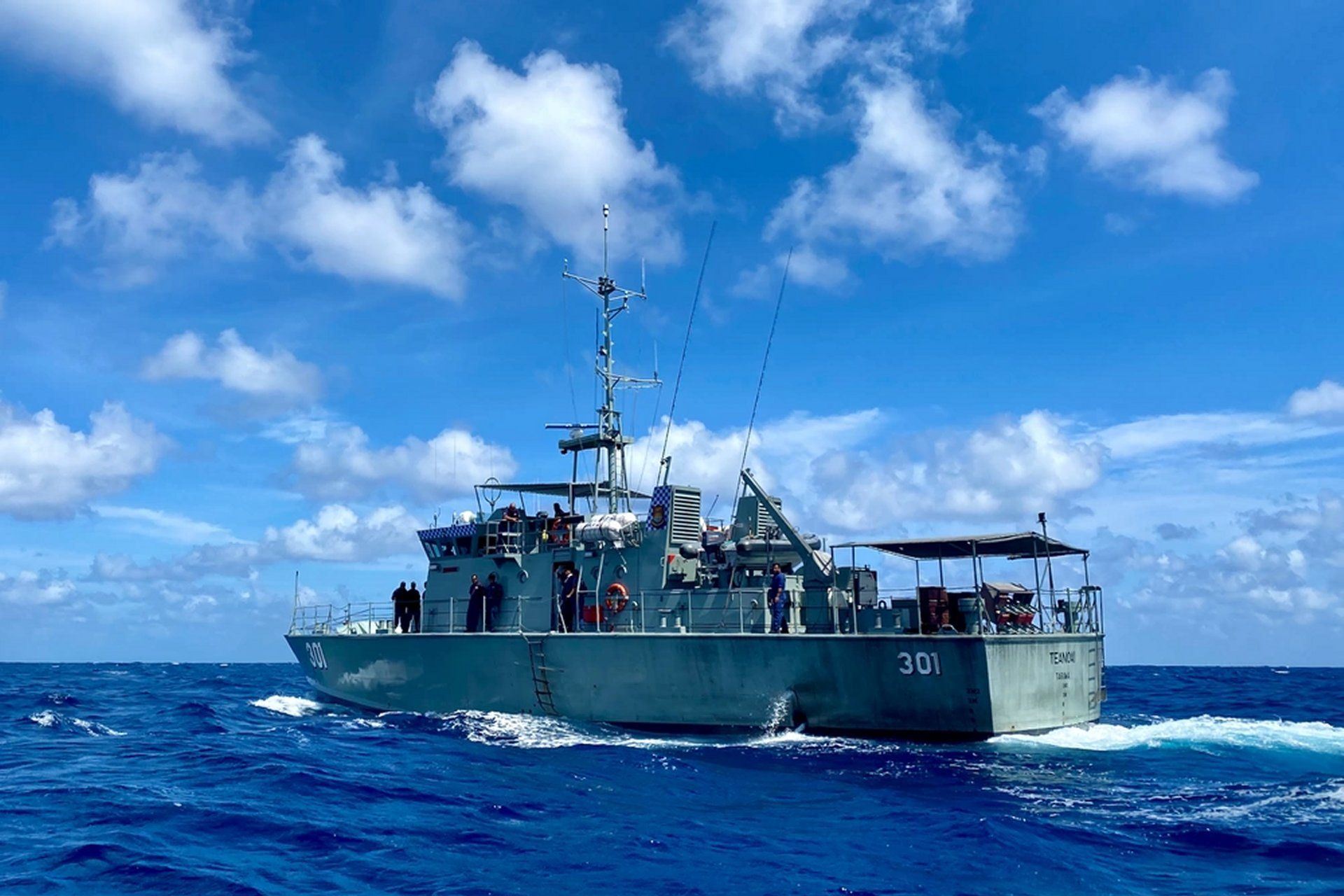 Guardian-class patrol boat RKS Teanoai II. (Picture source: US DoD) Since December 2018, the Austal Australia team, in collaboration with supply chain and defence industry partners, has delivered one new Guardian-class Patrol Boat approximately every four months. This consistent output highlights Western Australia's leading role in naval shipbuilding. Beyond the Guardian-class patrol boats, Austal Australia has also completed the construction of two Cape-class Patrol Boats, six Evolved Cape-class Patrol Boats, and three large high-speed ferries for commercial use globally within the same timeframe. The Pacific Patrol Boat Replacement Project, initiated in May 2016 and expanded through additional contracts in 2018, 2022, and 2024, now encompasses 24 vessels valued at over A$400 million. The 39.5-metre steel monohull patrol boats, designed and constructed by Austal Australia, feature enhanced seakeeping, improved amenities, and advanced mission capabilities, including an integrated RHIB stern launch and recovery system. These features provide the Republic of Kiribati with a versatile and effective naval asset for border patrols, regional policing, search and rescue, and other operations. Kiribati's defense and strategic landscape are heavily influenced by the broader geopolitical competition between major powers, primarily China and the United States. As a small island nation in the central Pacific, Kiribati's strategic significance has grown due to its location, which is increasingly seen as a potential asset in the Pacific theater. China's engagement with Kiribati includes significant investments and infrastructure projects, such as the rebuilding of a World War II-era runway on Kanton Island. This project, while ostensibly for commercial purposes, has raised concerns about its potential military implications, given the strategic location of Kanton Island in the Pacific Ocean. China's broader strategy in the Pacific involves leveraging economic investments and aid to gain influence, which has included efforts to establish closer ties with Pacific Island nations through the Belt and Road Initiative (BRI). In response to China's growing influence, the United States and its allies, particularly Australia and New Zealand, have increased their engagement in the Pacific. The U.S. strategy involves strengthening ties with Pacific Island nations through diplomatic, economic, and military cooperation. Initiatives like the Pacific Maritime Security Program by Australia, which provides patrol boats and aerial surveillance to improve maritime capabilities, are part of this broader effort to counterbalance Chinese influence. - Cookie policy
- Legal information
 Small boat crossings in 2024 pass 15,000It comes a day after the new prime minister outlined his plans to tackle illegal migration following Labour's scrapping of the Conservatives' Rwanda scheme. Political reporter @NifS Friday 19 July 2024 11:57, UK 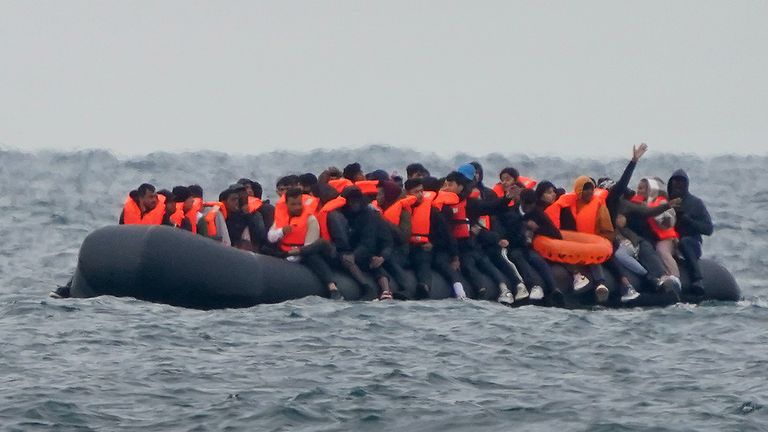 The number of people arriving in the UK via small boat Channel crossings this year has now passed 15,000, the government has confirmed. A total of 317 people made the dangerous journey across six boats on Thursday, bringing 2024's total so far to 15,076. Politics live: Demand for Cobra meeting over global IT outages The number is higher than the figure for the same date in 2023, where the total had reached 14,071. But it is still lower than the record breaking year of 2022, where it had reached 15,314 by this date.  Keep up with all the latest news from the UK and around the world by following Sky News It comes after another person died overnight when their boat, crowded with 86 people, got into trouble in the Channel. And it also follows fresh commitments from the new government on how it plans to tackle illegal migration. More on Labour New MP Natalie Fleet discusses being 'groomed' at 15 and wanting to be a voice for women  UK government to resume funding for UNRWA in Gaza  Scale of children who have parents in prison in England and Wales revealed for first time Related Topics:- Migrant crossings
- Sir Keir Starmer
Speaking at the European Political Community (EPC) summit last night, Sir Keir Starmer announced his plan to stop the crossings at "source" by putting £84m into health and education initiatives in Africa and the Middle East , helping prevent people wanting to flee their homes in the first place. Please use Chrome browser for a more accessible video player  The prime minister also confirmed a "deepening [of] cooperation" with European partners to tackle the issue, including increasing the UK's presence at Europol, agreeing new arrangements with Slovenia and Slovakia on tackling organised crime, and a commitment to share more intelligence "to put the gangs out of business". It is a very different approach to the previous Conservative government and their Rwanda deportation plan , which was scrapped by Labour after they took power two weeks ago. Be the first to get Breaking News Install the Sky News app for free  A Home Office spokesperson said: "We all want to see an end to dangerous small boat crossings, which are undermining border security and putting lives at risk. "The new government is taking steps to boost our border security, setting up a new Border Security Command which will bring together our intelligence and enforcement agencies, equipped with new counter-terror-style powers and hundreds of personnel stationed in the UK and overseas, to smash the criminal smuggling gangs making millions in profit." Related TopicsBoat fire kills at least 40 Haitian migrants, IOM reportsSign up here. Reporting by Harold Isaac and Stéphanie Hamel, Writing by Kylie Madry; Editing by Anthony Esposito Our Standards: The Thomson Reuters Trust Principles. , opens new tab  North Korea floats trash balloons towards SouthSouth Korea's military on Friday resumed its round-the-clock loudspeaker broadcast campaign targeting North Korea over its balloon campaign.   | 












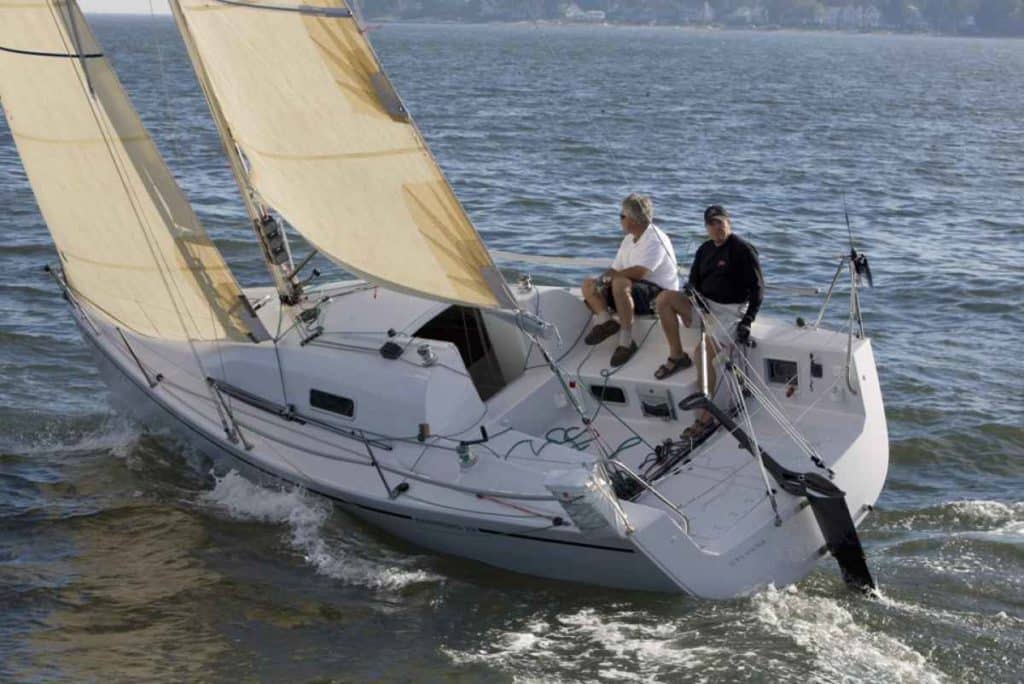
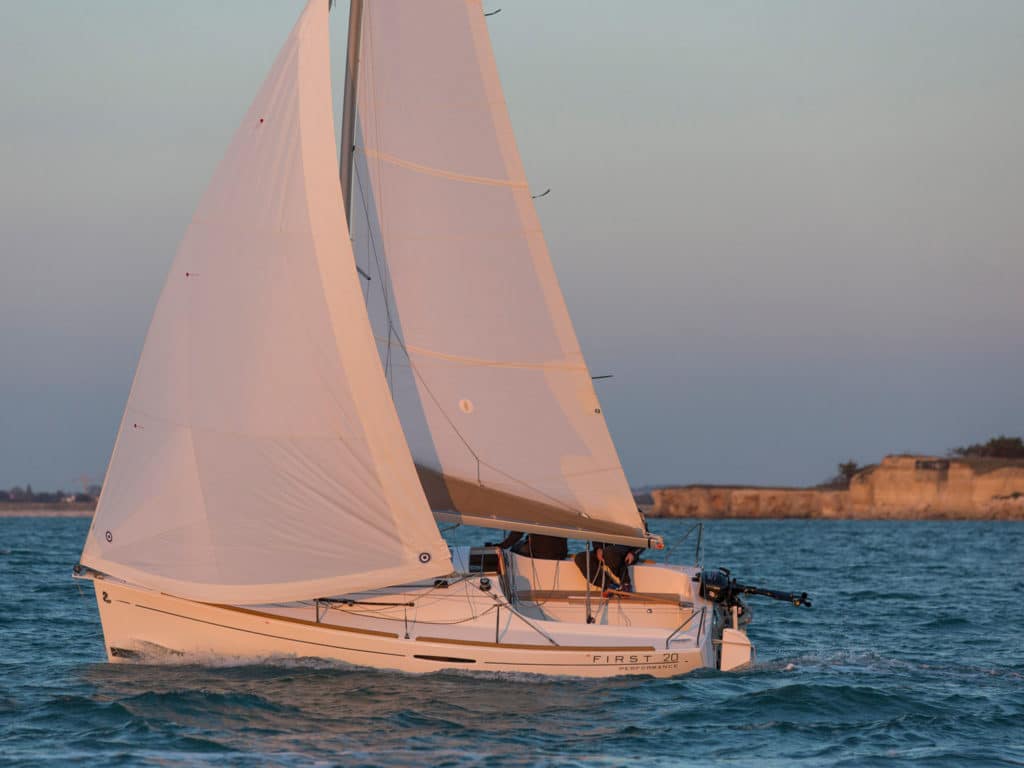
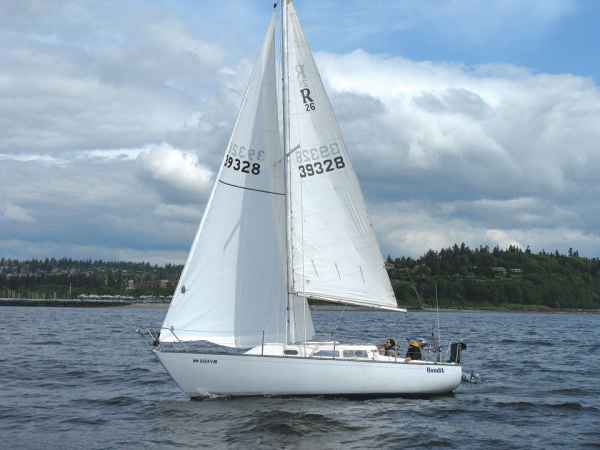
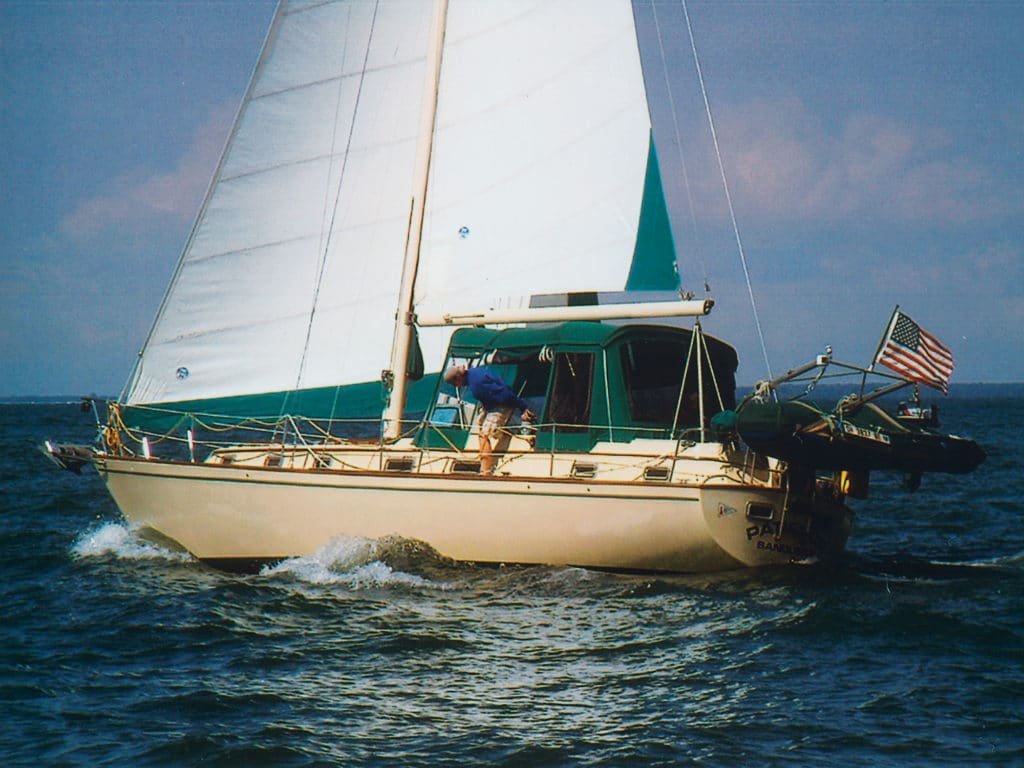
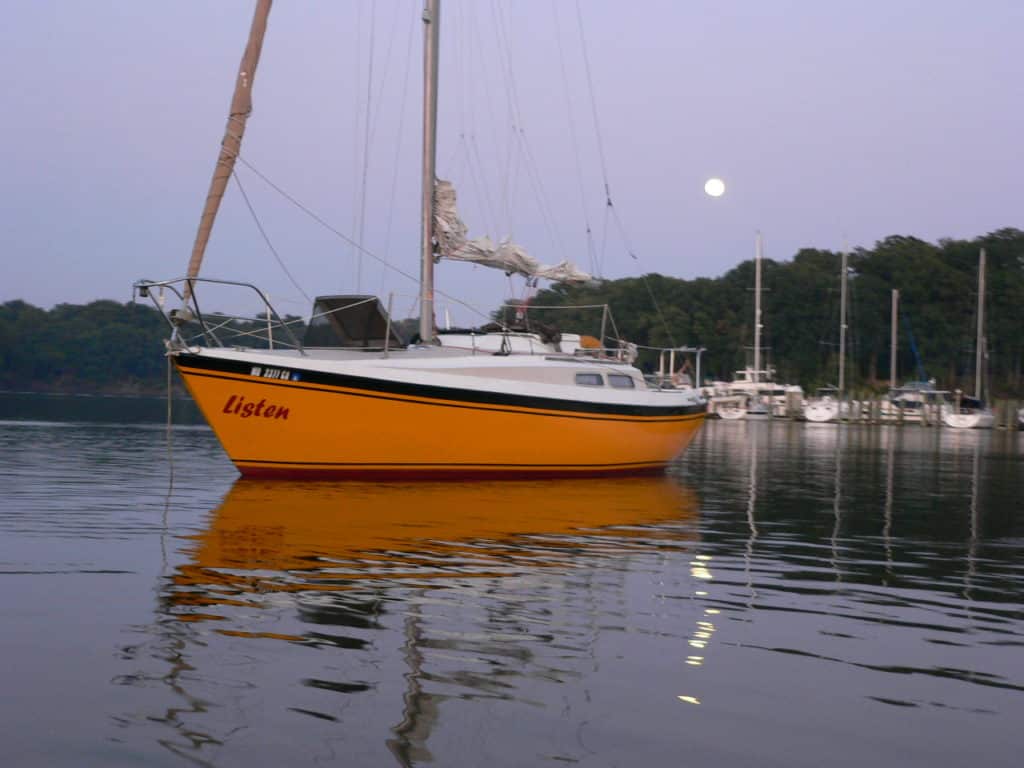
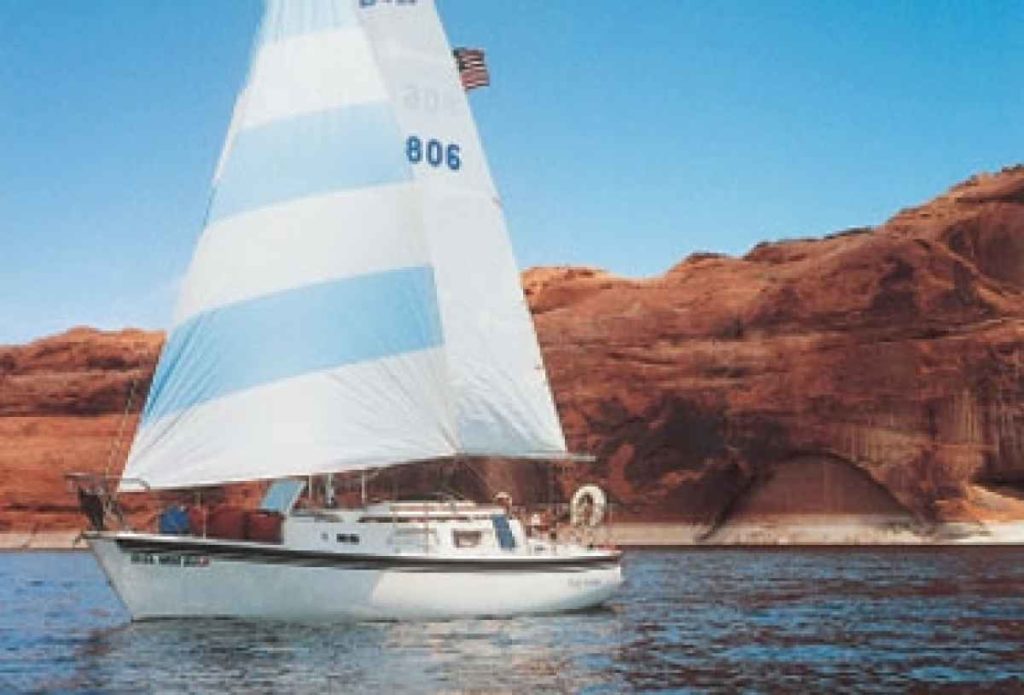
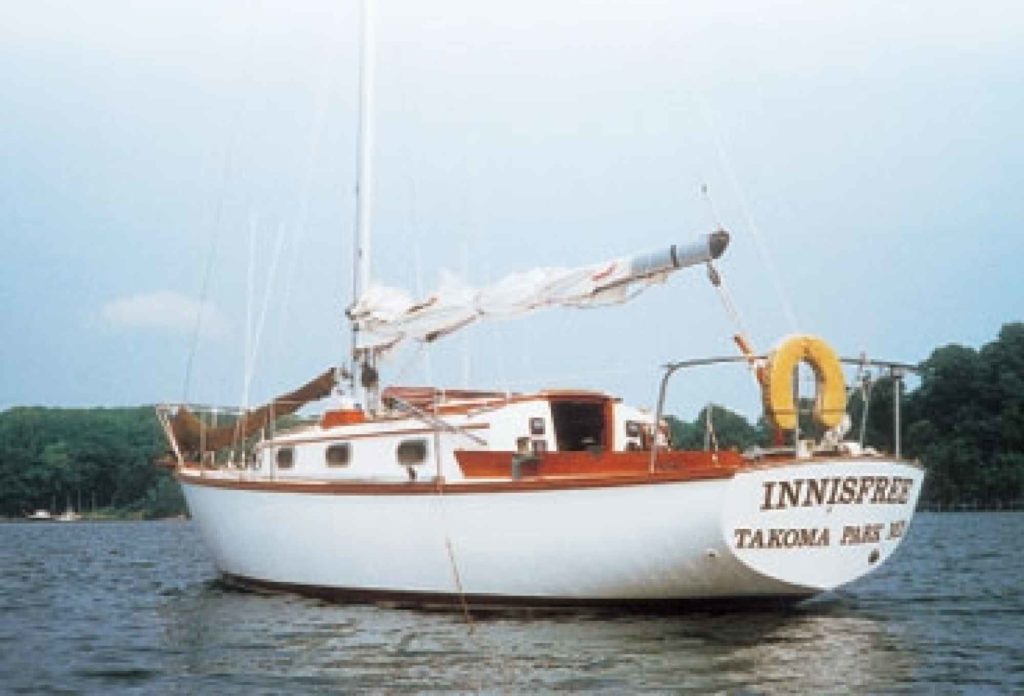
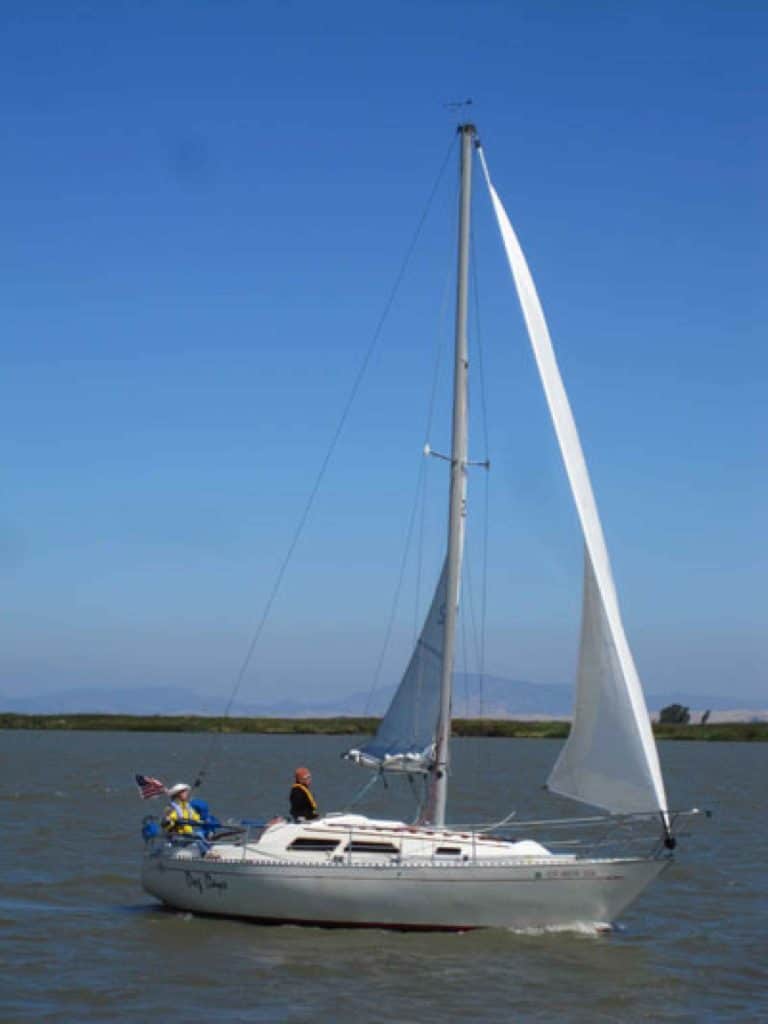
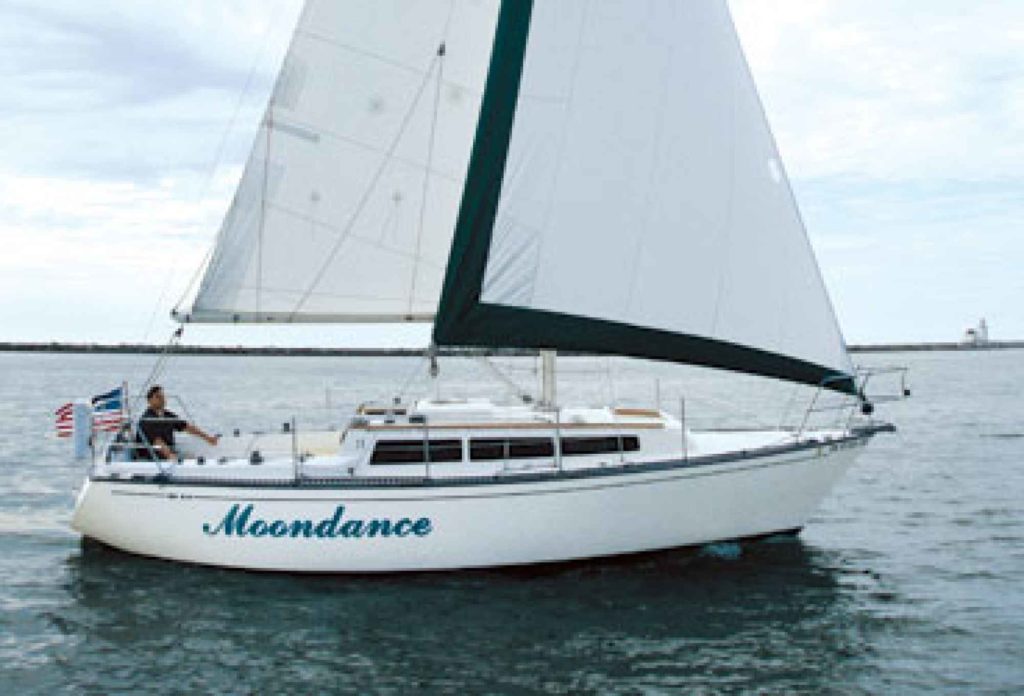
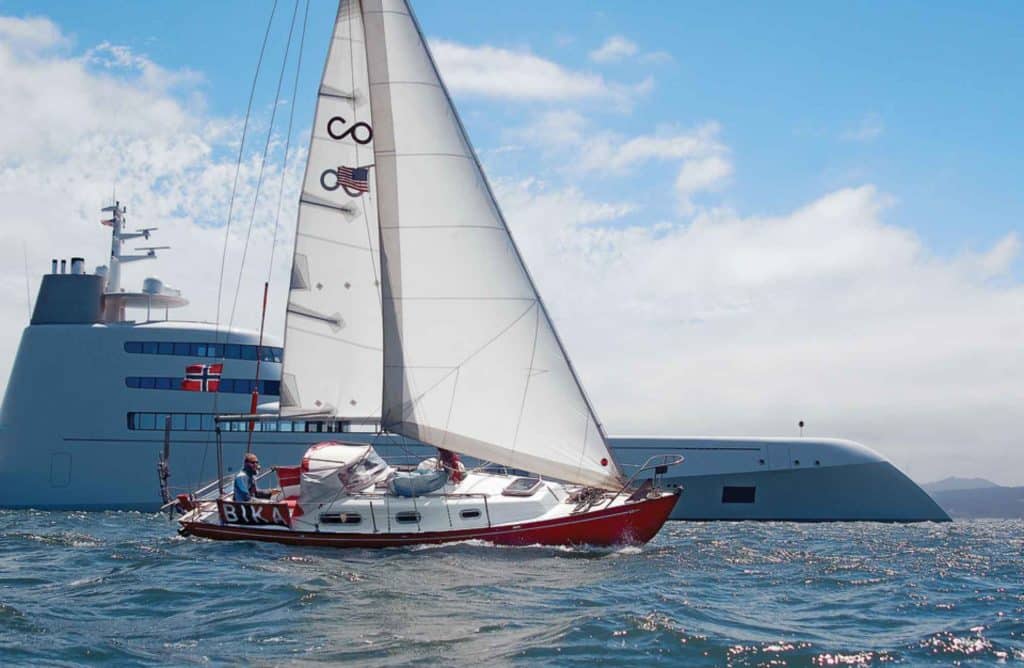
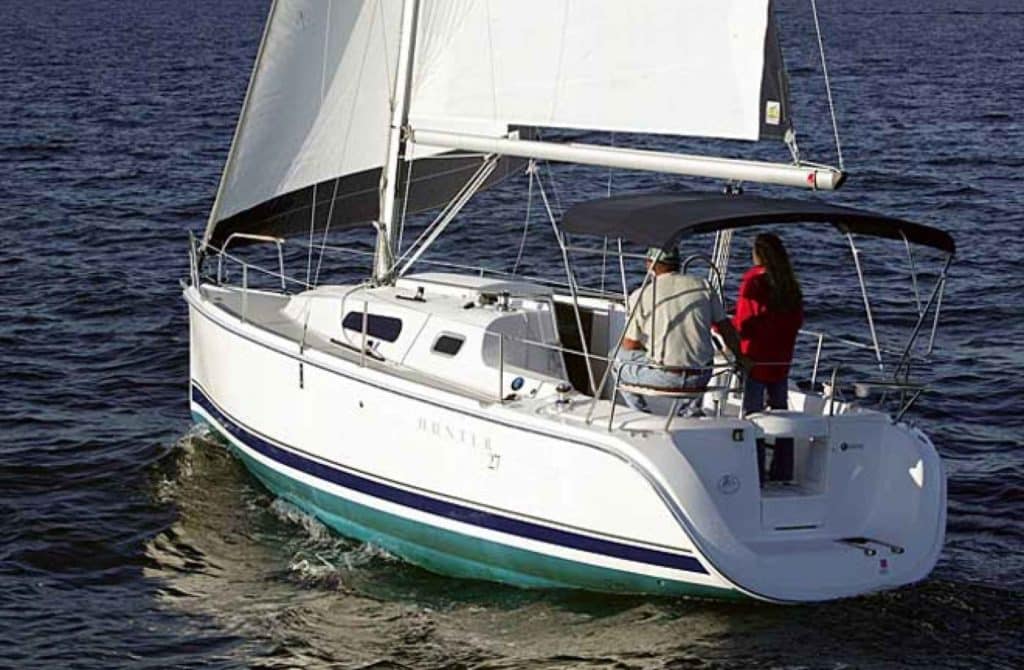




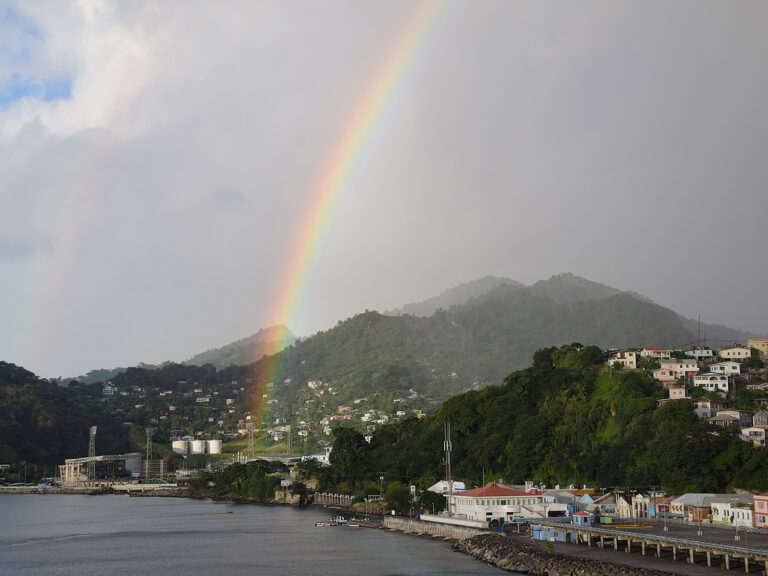




















































IMAGES
VIDEO
COMMENTS
Catalina 16.5. jlodrummer. Catalina Yachts are synonymous with bigger boats but they have some great and smaller boats too such as Catalina 16.5. This is one of the best small sailboats that are ideal for family outings given that it has a big and roomy cockpit, as well as a large storage locker.
7. Bénéteau Oceanis 45. cmhogarth. Named yacht of the year in 2012, the Bénéteau Oceanis 45 remains one of the most popular monohull sailboats in the world and for a good reason. This is a sailboat that redefines the important themes that made the Oceanis 50 so popular in a much better way.
Its enduring popularity, strong class association, and supportive community make it a beloved classic in the world of small sailboats, embodying a perfect blend of performance, comfort, and inclusivity for sailors of all levels. 8. Hobie Cat. Start a fun hobby with the Hobbie Cat. Length: 16.7ft / 5.04 m.
If you want a personal sailboat ideal for solo sailing, the Sun Can is a great choice. Belowdecks, the twin 6-foot-5-inch berths and many other features and amenities make this cat a willing weekender. $19,800, (727) 443-4408, com-pacyachts.com.
Small sailboats are generally under 20 feet in length, come in a variety of designs, and have different hulls. These include monohulls, catamarans, and trimarans. As long as they have a mast, rudder, sail, and are under 20 feet, it is considered a small sailboat. According to experienced sailors that use a smaller boat, it is best to have one ...
Vancouver 28. Photo credit: YachtFathom.co.uk. A sensible small boat with a "go-anywhere" attitude, this pocket cruiser was designed with ocean sailors in mind. One of the best cruising sailboats under 40 feet, the Vancouver 28 is great sailing in a small package. Hull Type:Full keel with transom hung rudder.
Our monohulls are designed by renowned manufacturers Jeanneau, Beneteau, and Dufour. With performance in mind, our monohulls give you optimal control whether the conditions are flat and calm or rough and wild. Choose from our world-class fleet of monos, ranging from compact 32 footers to spacious 53 footers.
Dufour Grand Large 360. Dufour Grand Large 360 Jon Whittle. Dufour Yachts introduced its new 360 Grand Large model to CW's Boat of the Year team in 2018 as a coastal cruiser intended for a couple or perhaps a small family. With that in mind, judge Alvah Simon found numerous clever elements to praise within the boat's 35-foot-2-inch hull—a ...
Balboa 26. Balboa 26 Courtesy Of Matts G. Djos. First splashed in 1969, the Balboa 26 continues to enjoy a strong following among budget-minded cruisers. Built sturdy and heavy, all of the boat's stress points are reinforced. The spacious cockpit comfortably seats 4 and is self bailing, ensuring that sailors stay dry.
The Pardeys are icons of small sailboat cruising. Having sailed over 200,000 nautical miles and circumnavigated both east and westbound on their home-built, engine-free, sub-30-feet cutters, they are among the most recognized sailors in the world. They're also known as "America's first couple of cruising.".
Classically refined and contemporarily equipped, The Moorings' monohulls set the standard for unforgettable performance and comfort. Backed by the boat-building heritage of leading manufacturers Beneteau, Jeanneau,and Dufour, these vessels are the premier choice for some of the most sought-after yacht charters available today.. Chart your course for the voyage of a lifetime and set sail on a ...
Backing into a slip is easier on a catamaran than a monohull. To back into a slip (which will make it more convenient for crew to step on and off) pull up until perpendicular with the slip, pivot the boat with the engines and then use both in reverse, adjusting as you back up if there is a beam wind.
Preowned sailboats for sale under 15 feet preowned sailboats for sale by owner. Home. Register & Post. View All Sailboats. Search. Avoid Fraud. ... fiberglass monohull: Location: West Falmouth, Massachusetts; Asking: $23,000: Sailboat Added 25-Apr-2013 More Details: Abbott Boats of Sarnia Ontario Wayfarer:
Listed hull types include monohull, displacement, catamaran, deep vee and other. Manufactured by a wide variety of yacht makers, there are currently 2,406 sloop yachts for sale on YachtWorld, with 330 new vessels for sale, and 2,076 used and custom yachts listed.
The definition of monohull is a sailboat with a single hull. Monohull sailboats are often categorised by the type of rig (mast and sails. Monohull sailboats are also called a sloop, cutter, ketch, yawl, or schooner. Sloop. Modern sailboats are most commonly the sloop. It has one mast and two sails. Typically, a Bermuda-rigged main and a headsail.
All impressive stuff for an 8m monohull. This is a proper pocket rocket that weighs just 650kg and can be rigged off the road trailer and launched in a couple of hours.
The characteristics of a monohull sailing boat. As the name suggests, the monohull sailboat - as opposed to multihull sailing boats - is a sailboat with a single hull . Sometimes equipped with an auxiliary engine, the monohull is propelled by the force of the wind and keeps its course thanks to the fins located in the water under the hull.
Both catamarans and monohull boats come in small recreational sailing versions, larger motorboat versions, and larger sailing models. ... This means catamarans can generate more power than the average monohull boat can generate. On the other hand, a monohull usually has less powered items to worry about.
Traditionally sailboats are monohull displacement hulls, but catamarans and multi-hulls are becoming more common. There are many kinds of sailboats and they carry different rigs (masts, supporting shrouds and stay, and sail combinations). Sloops have one mast and generally two sails - a mainsail and a headsail called a jib or genoa.
June 15, 2022. Sailboats come in numerous hull shapes. These include single-hull monohulls, along with double and triple-hull multihulls. There are two main categories of sailboat hulls: monohulls and multihulls. Common monohull types include flat-bottom vessels, fin-keel racers, bulb and bilge keel cruisers, heavy semi-displacement sailboats ...
Monohull Sailboats for Sale & Auction: At Harbor Shoppers choose from 100+ Monohull Sailboats at Best Prices. Foiling Monohull, Fastest Monohull Sailboats. 1 (800) 484-0367
10. New Zealand 'R' Class skiff. In New Zealand they love their skiff sailing, and development classes like the doublehanded 'R' Class are prime for new features. The 'R' Class started its project to get the fleet foiling back in 2008 and now there are a clutch of boats racing.
After graduating college in 2017, Davis sold his farm to a tourism company and made the decision to purchase a sailboat with the intent of traveling the world. He spent 10 days in Thailand where he learned to sail, and then traveled to Portland, Maine where he bought his first boat, a Tayana 50-foot monohull sailboat.
He's served in the military, bought land and built a farm, and now is sailing the world as a treasure hunter and small business owner. ... a Tayana 50-foot monohull sailboat.
The Pacific Patrol Boat Replacement Project, initiated in May 2016 and expanded through additional contracts in 2018, 2022, and 2024, now encompasses 24 vessels valued at over A$400 million. ... now encompasses 24 vessels valued at over A$400 million. The 39.5-metre steel monohull patrol boats, designed and constructed by Austal Australia ...
Small boat crossings in 2024 pass 15,000 . It comes a day after the new prime minister outlined his plans to tackle illegal migration following Labour's scrapping of the Conservatives' Rwanda scheme.
The boat, which was carrying over 80 people, departed from Fort Saint-Michel in Haiti's north and was headed for the Turks and Caicos islands, the IOM said in a statement, citing the Caribbean ...